The 2022 market is about to close after a series of events that can be considered extremely bad for the crypto market. A series of big players and giants have fallen before the harshness of the market. Let's review with Holdstation the outstanding events that have had a heavy impact on the cryptocurrency market through this article!
Crypto Hacks in 2022
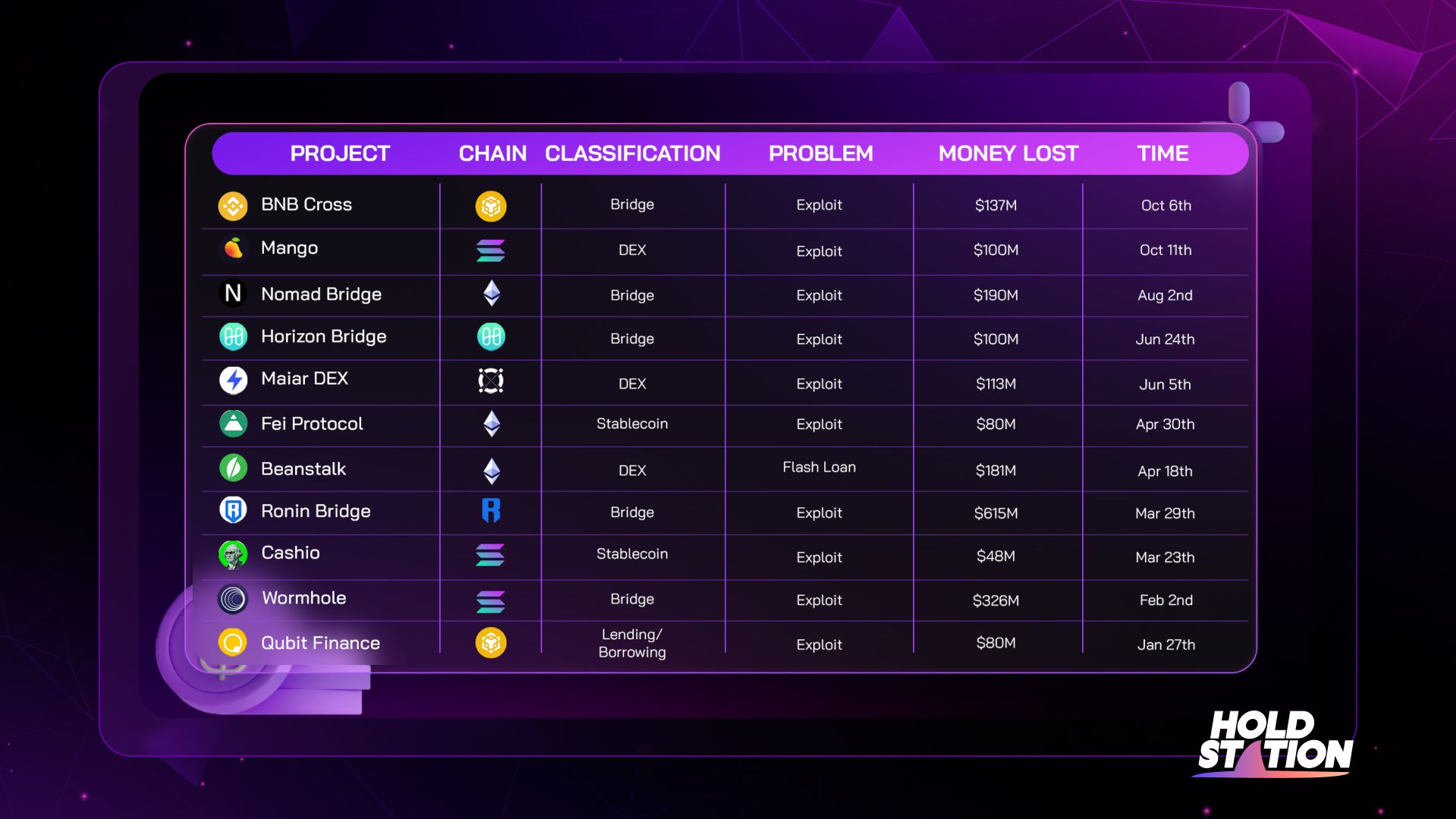
It can be said that 2022 is the year that hacks in the crypto market take place with great frequency. Which hacks have significantly affected user confidence in crypto projects. So when looking back at the hacking events of 2022, what lessons can we draw?
The common ground of this year's hacks
Most of the attacks are aimed at the top networks
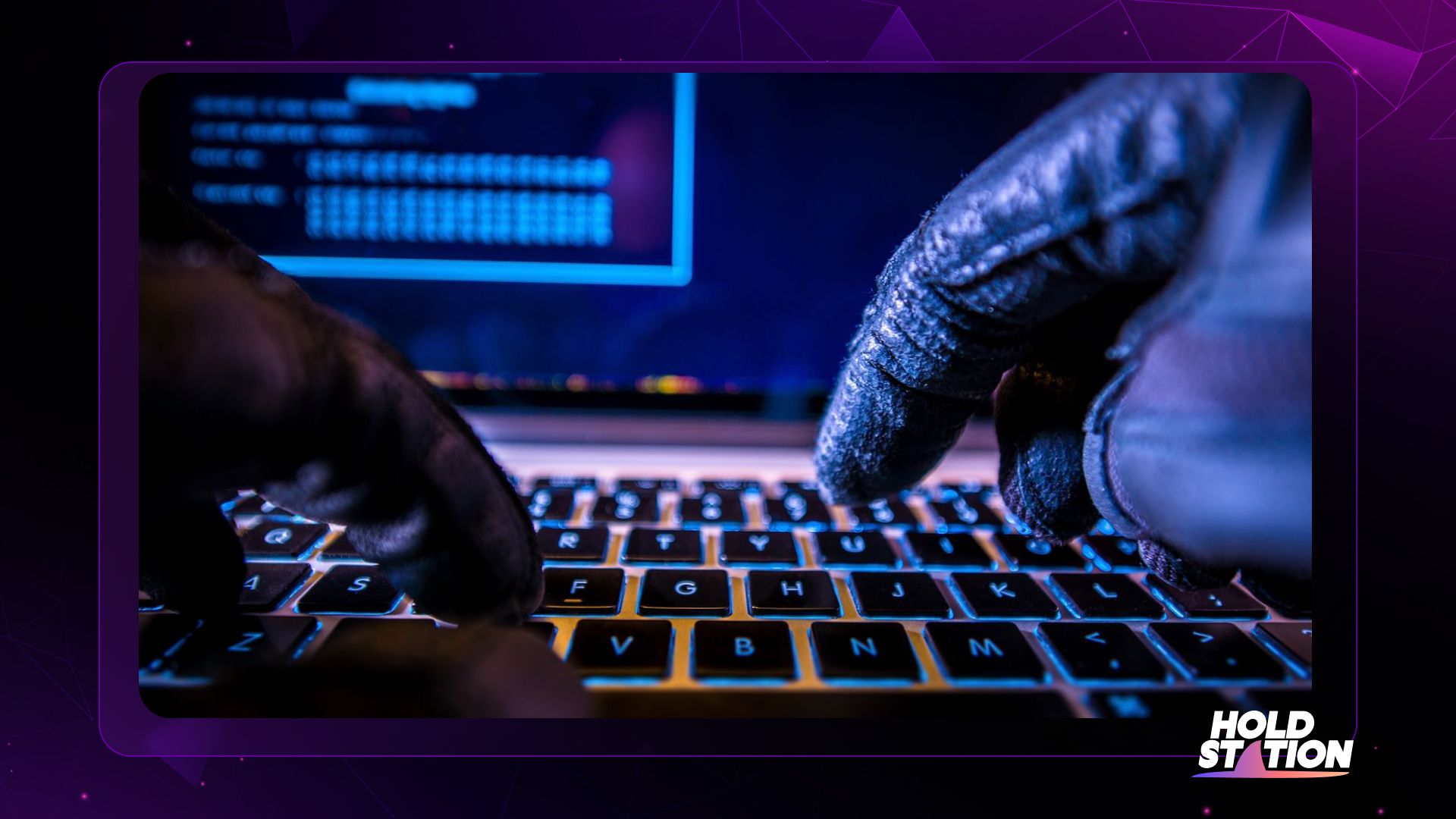
According to data from Defi Yield's REKT Database since the beginning of 2022. 80% of hacks happen on top blockchains like Ethereum, BSC and Solana. This is not difficult to understand when these are the blockchains that attract the most inflows in the crypto market.
However, in the top ecosystems, most projects are only made to catch the trend or are remakes of large existing projects with the main purpose of pursuing profits quickly. Leads to phase-burning processes at the programming or running stages of the code. Makes the project's security layers loose and creates many security holes.
As a result, hackers attacked and robbed huge amounts of money, projects became discredited with users. The goal of the profit race also suddenly disappeared into smoke.
Bridges are a favorite target for hackers

The beginning of 2022 is the Wormhole Bridge hack with damage amounting to more than $326 million. Following that, dozens of other large and small bridge hacks took place, such as the Roin bridge that was hacked to more than $625 million or the BNB cross chain bridge that was hacked and lost more than $300 million.
The common feature of bridge hacks is the extremely large amount of damage, proving that the problem of bridges in general is facing huge security holes. It is estimated that if only bridge hacks are taken into account, this number accounts for more than two-thirds of the total loss of all hacks in 2022.
Lessons from the hacks of 2022
Increased emphasis on security
Bridges are a favorite target of hackers when it is a huge money transfer station between chains. The careless coding process of project developers has led to many serious consequences later.
Do not put all your trust in any project!
Always make sure that the projects you "don't pay" have been audited by reputable organizations such as: Certik, Verichains, ... before users intend to use and experience. Or should use a secondary wallet combined with reasonable capital allocation when there is any intention to experience any non-transparent projects.
Cultivate a lot of knowledge
Having a sufficiently extensive knowledge will partly help users and investors avoid the risks of scams or lose money unnecessarily.
Adding a lot of knowledge is also a tool to help investors enter the new uptrend season confidently and search for trends as well as potential investment opportunities.
The Fall of LUNA and the bankruptcy domino effect of the big boys
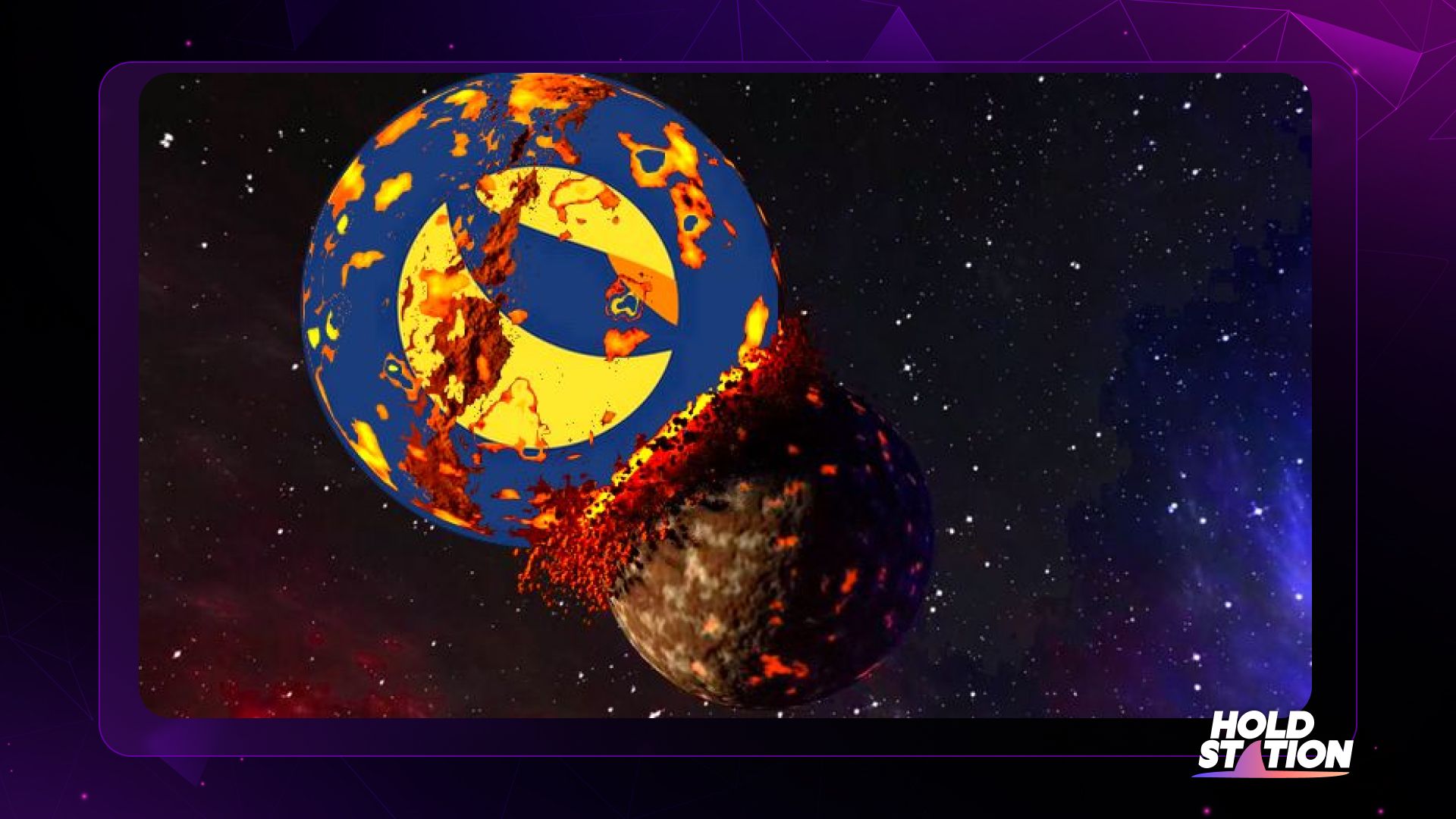
One of the events that plunged the entire crypto market into the "bloody" days of 2022 was the demise of Luna, the owner of the $UST algorithmic stablecoin and the $LUNA token.
The "departure" of LUNA (May 12)
"Deadly" Perfection
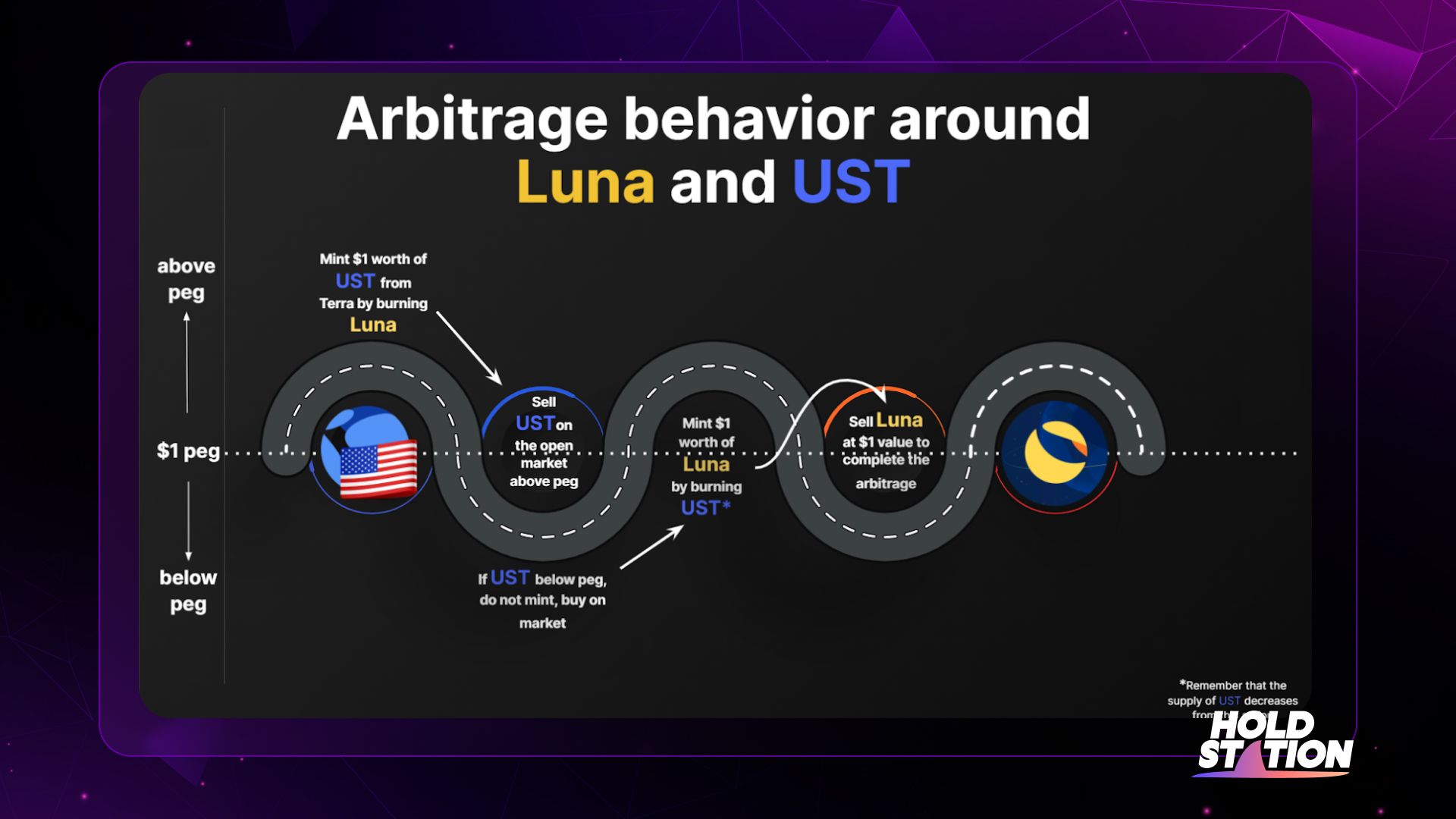
When the UST price is low, players will buy and exchange it to Luna to make a profit. Conversely, when the price of UST is high, players can exchange LUNA equivalent of one USD into one UST to eat the difference.
Luna has a strong connection to UST. This token has a total supply of one billion coins. If the network exceeds a billion, the Terra network will burn Luna until the supply returns to balance.
The $LUNA and $UST minting and burning mechanism is managed by complex algorithms that seemed perfect but eventually fell apart. So what is the cause of this story?
The reason and process of $UST collapse
The catalyst for the plunge was a series of large withdrawals from Anchor Protocol, a form of crypto-banking founded by Terraform. Such platforms are used by investors to profit by lending cryptocurrencies.
The large amount of transactions on Anchor caused the balance algorithm between UST and Luna to fluctuate sharply, causing de-peg status for UST.
May 5th: Days before the fall
– Burn and cast models of UST as well as LUNA still work normally
May 8th: The first domino falls
– Pool UST was attacked on Curve, BTC fell, leading to LUNA, leading to UST losing the threshold of 1 USD (de-peg) for the first time, falling to 0.9857 USD.
– Funds backing Terra, such as Jump Crypto, buy large amounts of UST to subsidize prices.
– CEO of Terraform Labs, Do Kwon reassures the community that everything is fine.
May 09: The situation is temporarily stable
– UST has not yet returned to the USD 1 mark.
– LFG (Luna Foundation Guards) announced to “fund” 750 million USD in Bitcoin and 750 million UST in order to stabilize the exchange rate, bringing UST back to the 1 USD mark.
May 10: LFG's Last Effort
– The second UST de-peg to $0.60, LUNA fell to $26.
– Luna Foundation Guard transferred the remaining $1.2 billion in Bitcoin to exchanges, but it is not clear if it will be sold to subsidize UST.
– UST then recovered to the zone of 0.8 – 0.9 USD.
Morning of 11/05: LUNA – UST collapsed
– UST continued to de-peg for the 3rd time to 0.67 USD, LUNA dumped to 13 USD.
– Rumors appeared that Luna Foundation Guard was raising capital from large funds to continue to have more money to save UST, but the deal broke down when the price of LUNA split by 2 within 12 hours.
– Do Kwon reassured the community, promising to draw up a resolution plan.
May 11 afternoon and evening: Do Kwon declared "sacrificing LUNA to save UST"
– 4th UST de-peg to 0.22 USD, LUNA price divided 19 times compared to the morning, decreased to 0.68 USD.
– CEO Do Kwon announced that he will increase the supply of LUNA to the market to buy into UST, restoring the price of 1 USD.
CEO Terra officially spoke up
May 12: Information chaos
– LUNA made a new bottom of 0.45 USD, UST temporarily recovered to 0.8 USD.
– There were rumors that LUNA and UST were “knocked down” by traditional investment funds, and the funds and exchanges were quickly denied. Crypto community “boycott” LUNA-UST.
– It is alleged that Do Kwon is behind the BasisCash project, an algorithmic stablecoin project that failed in 2020.
– Terra announced a plan to burn 1.3 billion UST to pull the price.
May 13: LUNA-UST "runs out of cure"
– The supply of LUNA increased from 400 million to 6.9 trillion within 72 hours, the price decreased to 0.00000112 USD.
– UST de-peg 5th time to 0.037 USD and can never return to $ 1.
– Binance cancels spot, futures, margin and products related to LUNA/UST, leaving only 2 spot pairs, LUNA/BUSD and UST/BUSD.
– Terra has to stop the blockchain twice within 12 hours to ensure the security of the network.
– Terra then had a meeting with CZ, deciding to stop increasing the supply of LUNA and resume the blockchain. Binance resumes LUNA/BUSD and UST/BUSD trading.
Domino bankruptcy of Celsius, 3AC and Voyager
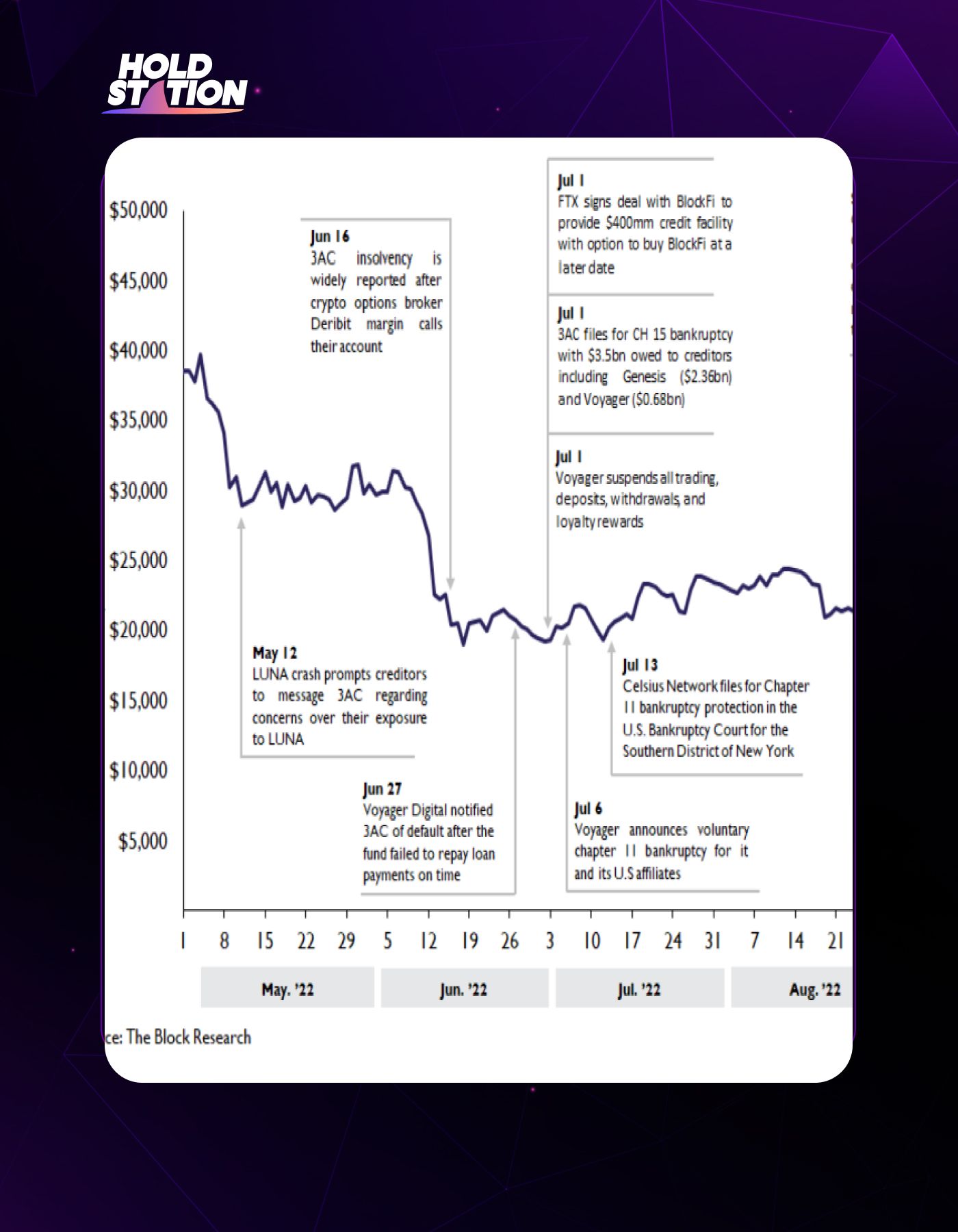
3AC goes bankrupt (July 1)
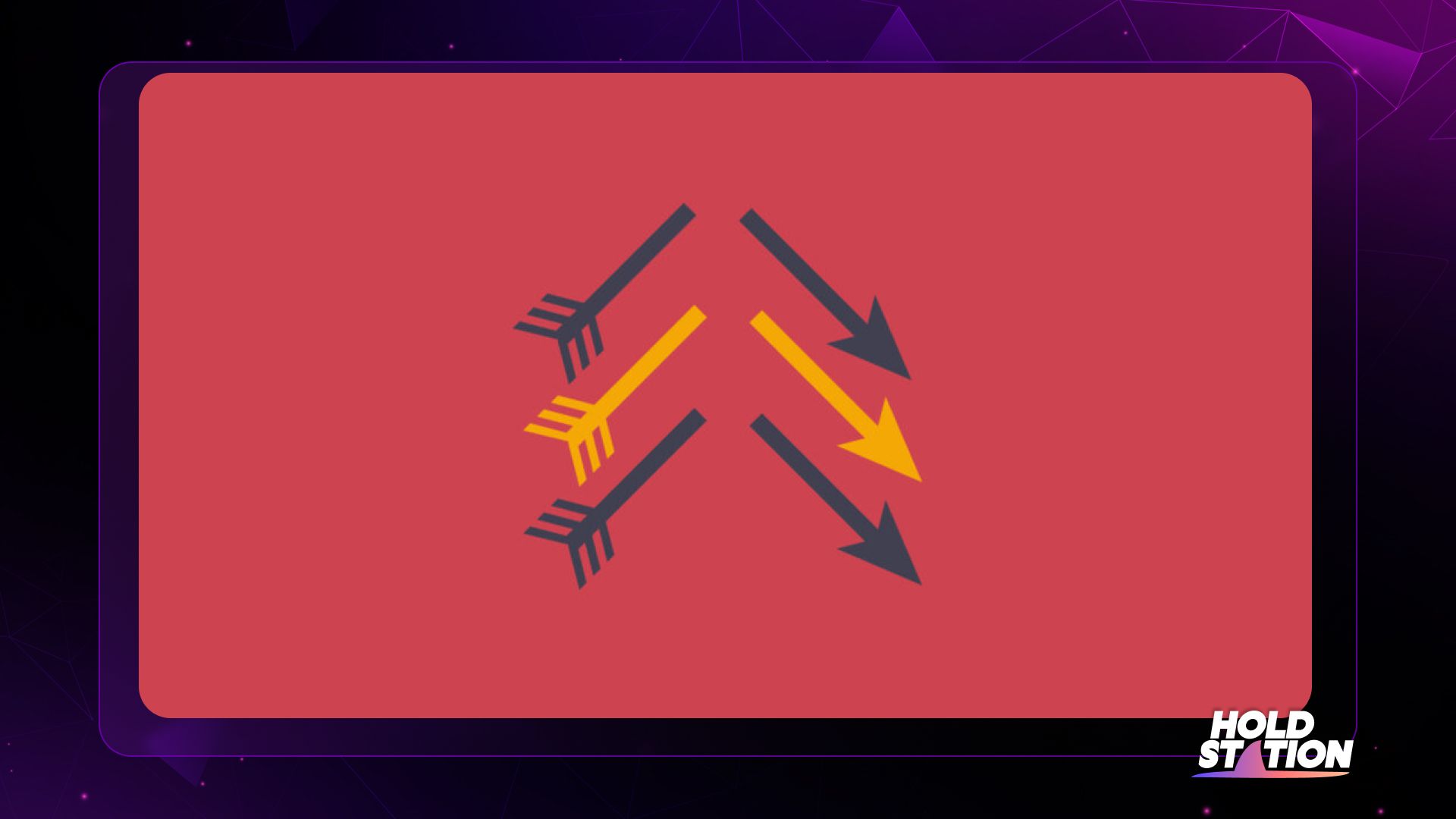
From managing $10 billion to running out of pennies, the collapse of crypto hedge fund Three Arrows Capital has dragged many investors to the bottom.
Three Arrows' strategy is to borrow money from all over and invest in other crypto projects. 3AC has been around for about a decade, helping founders Zhu Su and Kyle Davies gain credibility in the crypto industry. Zhu Su is also the host of a popular crypto podcast.
The collapse of Three Arrows Capital is linked to the May collapse of UST. 3AC said it has invested $200 million in LUNA. Other reports put the investment at more than $600 million. Whatever the exact number, it becomes worthless when the project fails.
3AC's story is no different from Celsius when this fund has also committed to its customers a return of 20% a year. Having to pay high interest but the investment fund did not make a profit, 3 arrows after more than a decade of operation were also "broken".
Voyager bankruptcy (July 6)
Similar to 3AC, the driving force behind Voyager's downfall also came from borrowing and lending. Three Arrows Capital (3AC) filed for bankruptcy and was therefore unable to meet its debt payment obligations on a loan of more than $670 million to Voyager. The loss of a $670 million investment put Voyager under pressure on its creditors.
One of Voyager's largest creditors is Alameda Research with a loan of nearly $500 million. After Voyager filed for bankruptcy Alameda almost lost this money (Adding another factor leading to Alameda's demise later)
Celsius bankruptcy (July 13)
In the case of Celsius, the promise of high double-digit annual returns was the main cause of this giant's downfall.
They subsidized and suffered losses to attract large numbers of customers. Basically, they profited like a multi-level Ponzi scheme. The fund has used customer deposits to invest in platforms that promise to pay stellar returns to keep the platform's business model afloat.
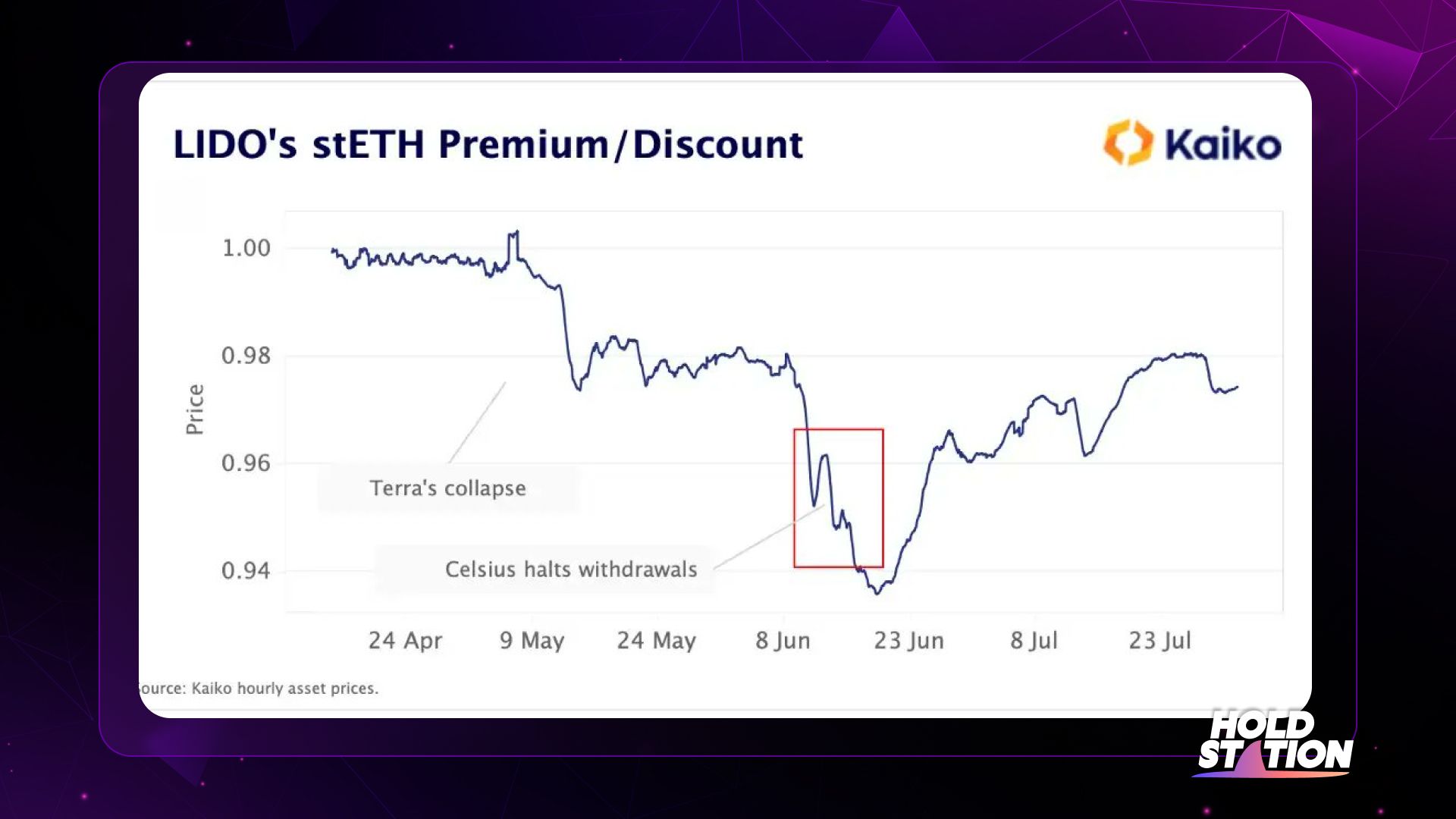
According to The Block, Celsius invests at least half a billion dollars in Anchor, a UST lending platform. And when Luna fell, UST de-peg. Celsius has "flyed" off his half-billion investment. Besides, the investment in the amount of stETH on Lido Finance is too large, but stETH lost its peg to ETH due to the spike in stETH to ETH conversion, followed by 3AC and Alameda Research leading to a deep liquidity crisis. important.
Taking customers' money to invest in risky portfolios. In the end, these portfolios did not generate interest but went bankrupt making Celsius a debtor to more than 100,000 creditors. Some of Celsius's creditors include Alameda Research and FTX. This may also be one of the reasons leading to the collapse of Alameda and FTX later.
Lessons learned from the bankrupt domino chain
Bankruptcy in common
All three big companies Celsius, 3AC and Voyager are big and reputable funds in the market. However, the issue of risk management, which is considered the most important in the financial market, has been overlooked in all three of these giants.
These giants all use the strategy of borrowing money from customers, investing or lending from the big guys and investing in staking portfolios that promise double-digit returns. In order to have money to pay interest to customers, the big companies have continuously come up with tricks to invite new retail investors with a commitment to pay high interest. Taking money from the latter to pay interest to the previous participants has created a ponzi model that makes the business unsustainable. Just an unexpected event can make
The loans and cross-planting loans of the three giants are all linked to one thing in common, which is to use that money to invest in Luna. By the time Luna collapsed, the investments in this place were lost, leading to the final effect that investors lost all their money.
Lessons for the market
-The model of borrowing and lending with a commitment to pay high interest and then take it to venture capital (2 figures a year) has caused large funds to evaporate hundreds of millions of dollars and then go bankrupt. Strategies to make high profits in a short time have cost the big guys. Proving that the business model of borrowing and lending and then investing in high-interest projects has not been effective.
-The projects also did not fully assess the risks of business models, specifically here is Luna's automatic burn and minting algorithm. Therefore, a comprehensive assessment of the strengths and weaknesses of the project is extremely important. You should not only see the strong strengths that are too good, but ignore the small "deadly" weaknesses.
-Macro factors have been affecting the crypto market more and more. In addition to evaluating the project separately, it is necessary to consider more market and macro factors that may affect the future development of the project.
Lessons for investors
-Investors often blindly believe in investment invitations with the promise of paying huge interest rates without carefully considering the transparency and business mechanism of the project. Leads to consequences of loss of money to invest or even loss.
-Always be wise with any advertising for a new business model, as it is most likely just "new bottle, old wine". The unsustainable Ponzi game that brings new players money to old people will always attract unsuspecting investors. Any investment decision should have a proper capital allocation.
The collapse of the FTX empire - The market plummeted
Surely many people still remember the recent collapse of the FTX empire that led to a major crisis and caused many consequences for the crypto market. Take a look at how this great event unfolded below.
Developments:
- November 2nd: CoinDesk publishes FTX's unhealthy balance sheet.
- Nov 6: After rechecking the above balance sheet, CZ Binance announced that he is currently selling off about $23 million in existing FTT and will liquidate all of his FTT tokens.
- November 7th: CZ reveals more that FTX can cause a big crisis like Luna. This has caused investors to massively withdraw money from FTX, about 300 million USD of stablecoin has been wiped out, leading to FTX running out of money. Urgently, FTX asked Alamenda to provide 257 million USD and mortgaged Alamenda with FTT tokens of the above total value.
- 11/8: Only 2 days after CZ announced the sale of FTT, the market was in the red, BTC lost the 21k mark to 15k5.
- November 10: FTX is agreed to buy back by CZ but still has the right to withdraw at any time, which leads to the price of FTT increasing slightly for a few hours and then falling again. After that CZ terminated the acquisition of FTX, FTX fell into crisis and really collapsed.
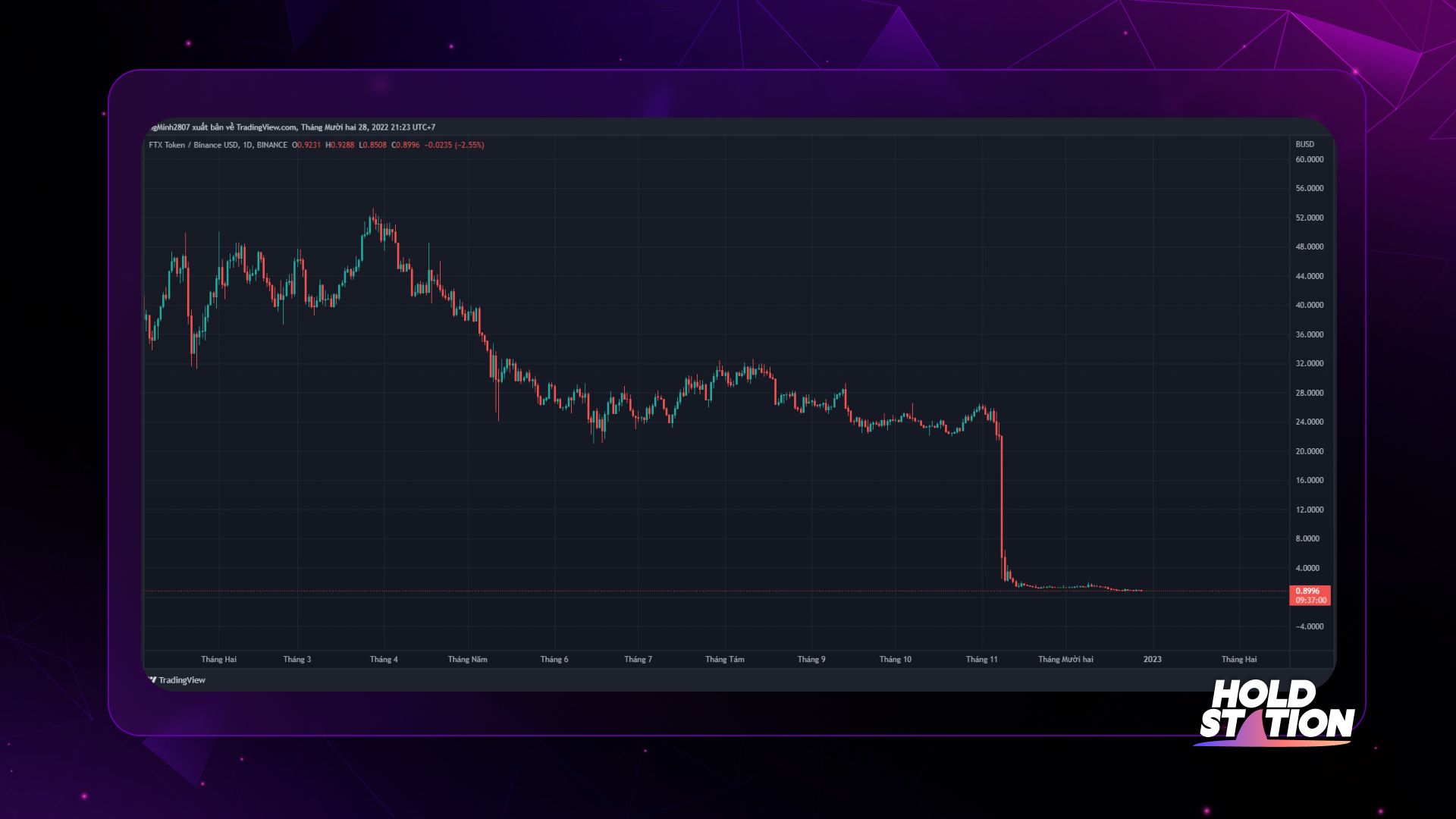
Consequence:
- FTX collapsed, leading to a large investment fund, Alamenda.
- Solana ecosystem was broken and the sister affected the most, the validator massively withdrew from the ecosystem, the price dropped sharply from $36 to $13.
- A series of organizations and projects are affected by FTX/Alamenda's sponsorship such as Fantom, Sushiswap, Bonfida, etc. Not only that, two large blockchains, Aptos and Sui, are expected to have FTX's investment participation.
- The whole market was negatively affected by this crisis, the market sold off a lot, dragging the whole market down, BTC price plummeted from 21k to 15k5.
Binance meets FUD - Binance USD loses peg
Immediately after the crisis of the collapse of the FTX empire, Binance published proof of Binance's assets but also encountered doubts and information that caused Binance to have many difficulties in the last month of 2022. Let's take a look back. about rumors that have caused difficulties for Binance in recent times.
Developments:
- December 11th: Wall Street casts doubt on Binance's "Proof of Reserve" proof of reserve. After that, Mazars was constantly given information by the Mazars auditor that Binance did not really have all the assets as reported and took actions that raised suspicions for Binance. This created a rumor that Binance had no collateral causing BUSD to lose a small peg, but bounced back in a few hours.
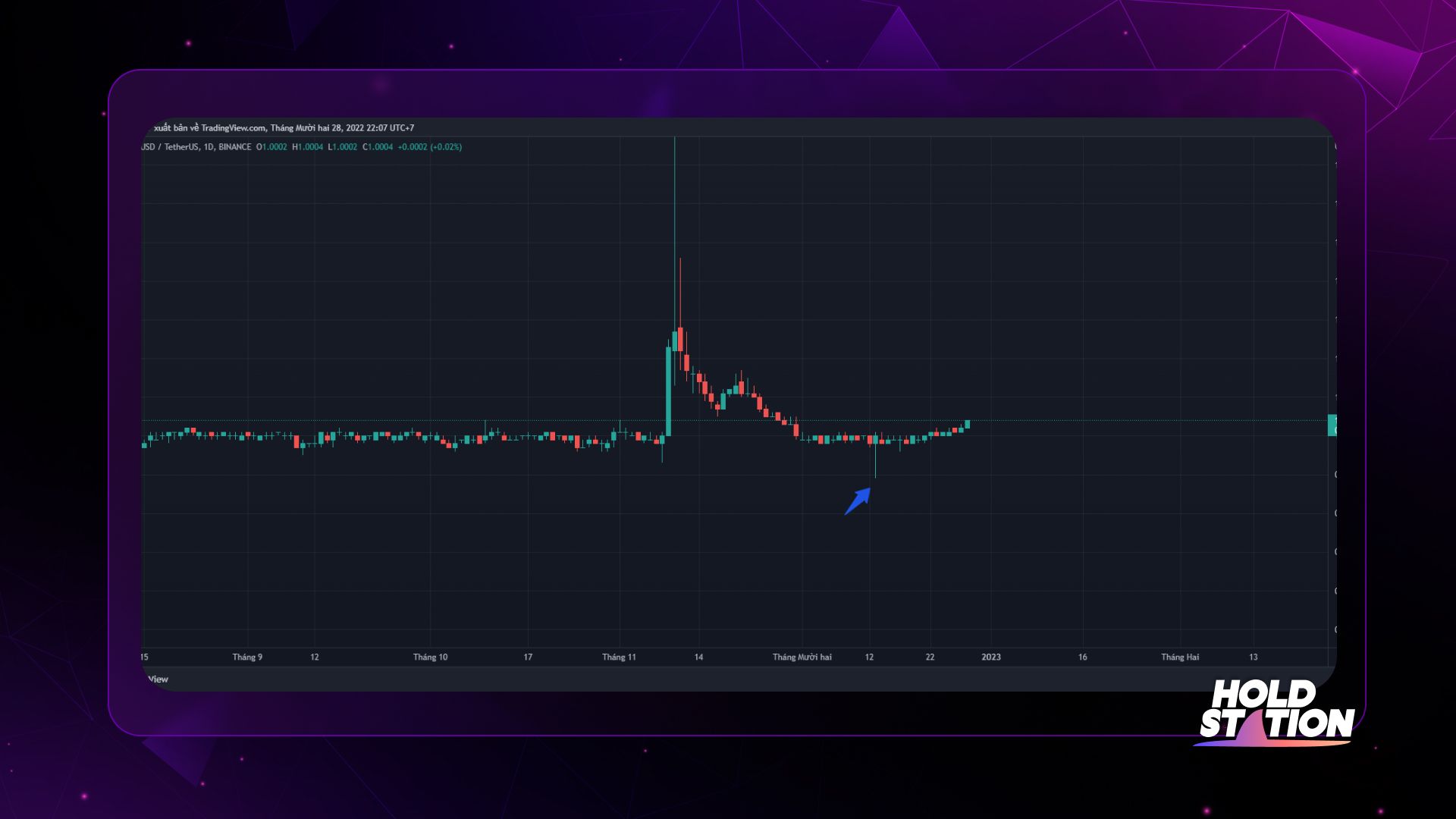
- December 13: Approximately $1.9 billion was withdrawn from Binance in 24 hours. This is a large number for a withdrawal from a cryptocurrency exchange. However, an Arkham analyst said that this "doesn't seem too unusual" compared to the $64 billion in assets that Binance has under management. Continuity of negative rumors, the price of BNB has also plummeted from $290 to $231.
- However, the allegations against Binance aren't really that dangerous upon scrutiny. Perhaps everything is just rumors that confuse investors.
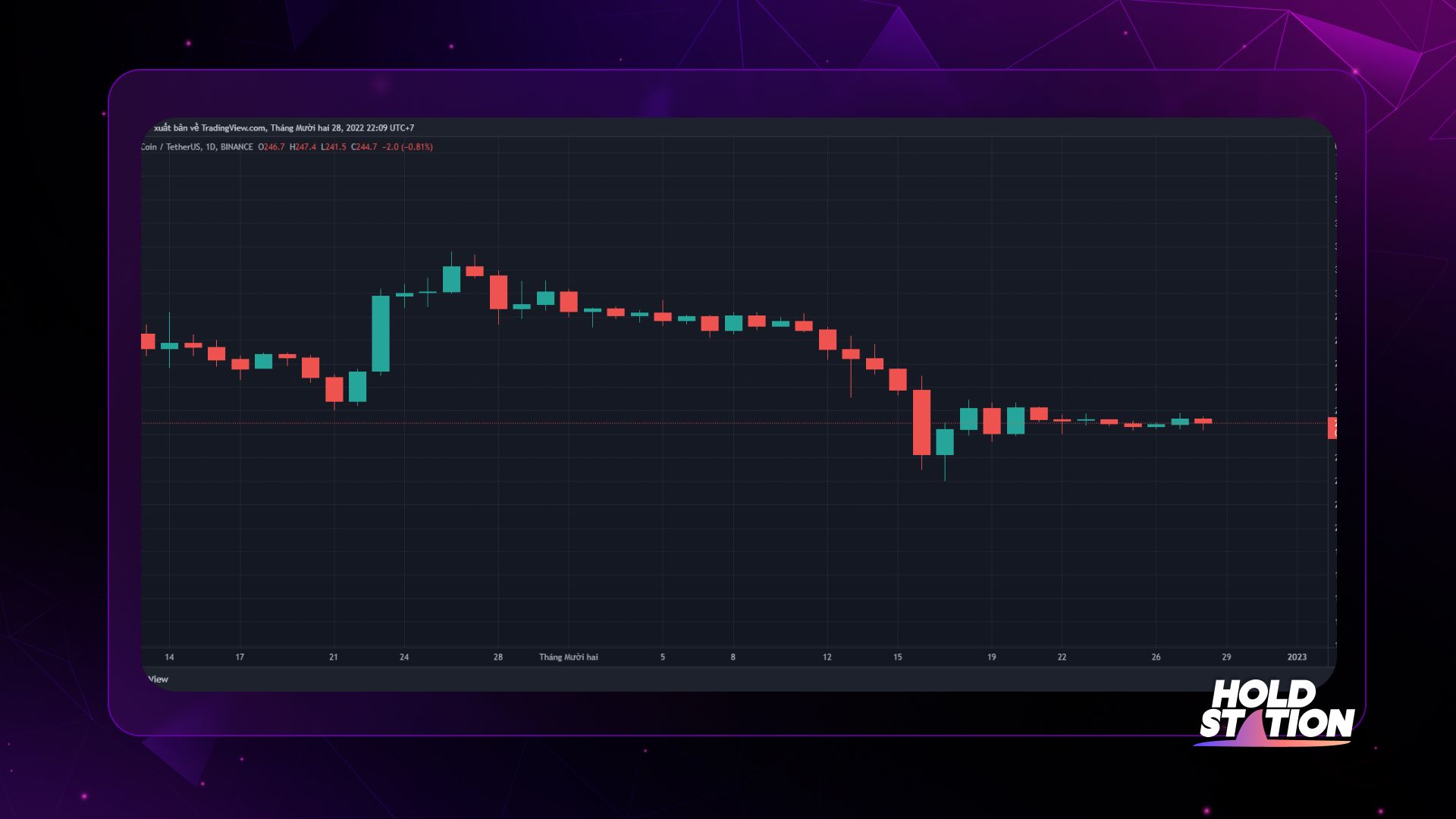
Lessons learned from FTX and Binance
Lessons for investors:
- The blockchain industry explodes rapidly and at an amazing rate, but that is why it fomos into the “want to get rich quick” mentality, leading to things like investing without really understanding what you are investing. into what. —> Investors should only invest in what they really understand.
- Big empires are not necessarily right, investments should not be trusted without due diligence.
Lessons for the market - projects:
- Always be prepared with contingency plans in case of a crisis. Similar to investors, the market or developers need to beware of big empires, there is no such thing as "too big to fail", every investment has a degree of risk.
Holdstation Wallet - Your Gate to Web3 💜🦈
Make DeFi as easy as CeFi!
Disclaimer:
The information, statements and conjecture contained in this article, including opinions expressed, are based on information sources that Holdstation believes those are reliable. The opinions expressed in this article are personal opinions expressed after careful consideration and based on the best information we have at the writing's time. This article is not and should not be explained as an offer or solicitation to buy/sell any tokens/NFTs.
Holdstation is not responsible for any direct or indirect losses arising from the use of this article content.




